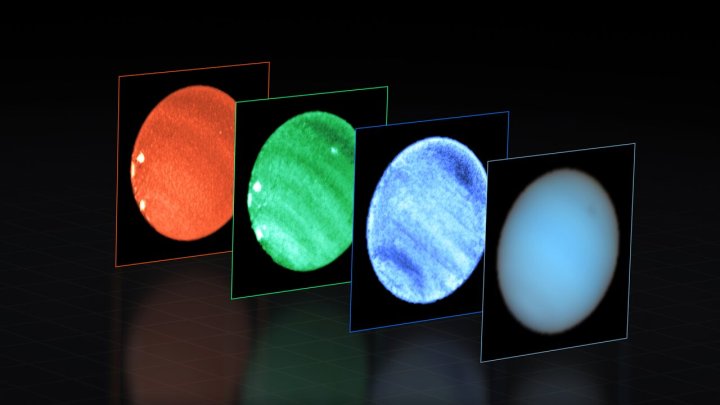While the most famous planetary spot in the solar system would have to be Jupiter’s Great Red Spot, an epic storm 10,000 miles wide that has been raging for hundreds of years, other planets are known to host spots of their own as well. That includes Neptune, which had a large dark spot that was first imaged by Voyager 2 when it passed by in the 1980s.
Neptune’s spot was named the Great Dark Spot, but when the Hubble Space Telescope tried to image the spot in 1994, it had disappeared. Now, a Neptune spot has been imaged from the ground for the first time, using the European Southern Observatory’s Very Large Telescope (VLT).

“Since the first discovery of a dark spot, I’ve always wondered what these short-lived and elusive dark features are,” said lead researcher Patrick Irwin of the University of Oxford in a statement.
Hubble returned to observe Neptune and observed another spot in the northern hemisphere in 2018, providing the chance for astronomers to study a spot while it was present. They used an instrument on the VLT called MUSE, or the Multi Unit Spectroscopic Explorer, to get spectrographic data which shows a 3D view of the spot by looking at different levels in the atmosphere. The research suggests that the spot is caused by darker air particles, which collect beneath the hazy layer in the planet’s atmosphere.
“I’m absolutely thrilled to have been able to not only make the first detection of a dark spot from the ground but also record for the very first time a reflection spectrum of such a feature,” said Irwin.

The researchers also found an unexpected bright spot next to the dark spot, thought to be an unusual type of cloud. The research shows how astronomers can learn more about the atmospheres of distant solar system planets from the ground.
“This is an astounding increase in humanity’s ability to observe the cosmos. At first, we could only detect these spots by sending a spacecraft there, like Voyager. Then we gained the ability to make them out remotely with Hubble. Finally, technology has advanced to enable this from the ground,” said co-author Michael Wong.
The research is published in the journal Nature Astronomy.



